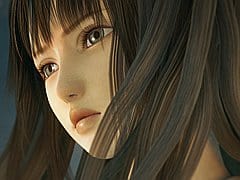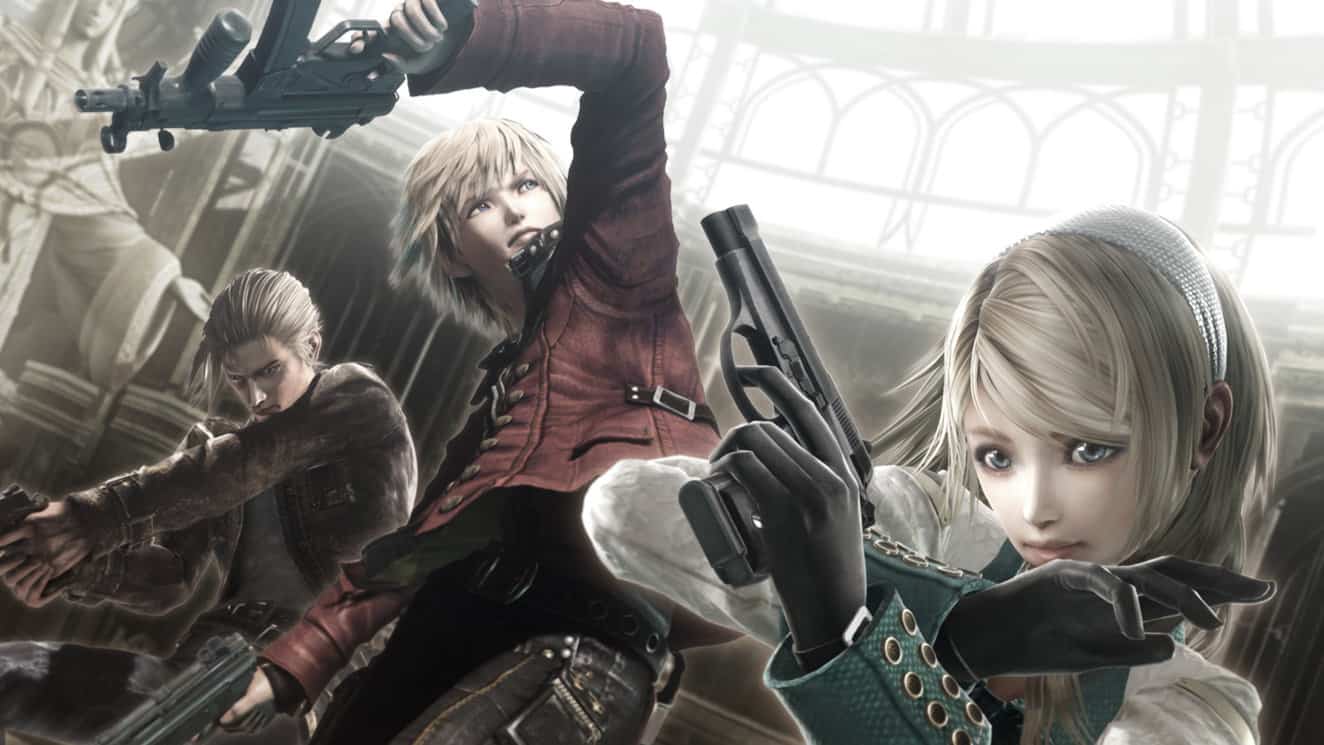You can trust VideoGamer. Our team of gaming experts spend hours testing and reviewing the latest games, to ensure you're reading the most comprehensive guide possible. Rest assured, all imagery and advice is unique and original. Check out how we test and review games here
There’s a problem with modern Japanese role-playing games. They’re not modern at all. They’re stuck in some 90’s time warp, unable to break free from the conventions and designs that saw the genre dominate a decade ago. Put simply, western role-playing games, aka RPG shooters, the Mass Effects and the Fallout 3s, have moved things forward, and JRPGs are trailing in their wake.
tri-Ace, creator of the Star Ocean series (kind of like an anime Star Trek), is as guilty as any Japanese developer of failing to innovate. Last game Star Ocean: The Last Hope was a significant improvement on the instantly forgettable Infinite Undiscovery, but it still suffered from similar problems: clichéd storyline, teenage angst-ridden characters and endless, endless grind. Oh, and it had a silly, nonsensical title.
Don’t misunderstand. We want to love JRPGs again. We want to feel the same feeling we had when we played Chrono Trigger for the first time, or Final Fantasy VII, or Vagrant Story, or Dragon Quest VIII. JRPGs will always have a well-made bed reserved in our hearts for whenever they decide to get their sh*t together.
It is with this hope that we stroll along London’s busy Regent Street to a tucked away West End club to see tri-Ace’s next game, Resonance of Fate, shown off for the first time by new publisher SEGA – this is the first tri-Ace game NOT published by Square-Enix. What we see is promising AND troubling, a game that’s designed to appeal to a western audience as well as an eastern one.
While the game retains fantasy and sci-fi elements, Resonance of Fate is steampunk through and through – “neither future nor past”, says localisation producer Jun Yoshino. The game is set on a gargantuan mechanical clock-like tower called Bazel. It was originally designed to purify the environment of poisonous layers of gas, but over time civilisation began to form around it, to the point where it’s become so integrated into the world that it essentially governs all things that live within it. The elite live in luxury at the top of the tower and the unfortunate rest live in squalor down at the bottom under threat of monsters (JRPG cliché alert).
We see a party of three – Zephyr, Reanbell, a female, and Vashyron, a tall bloke who acts as an older brother and leads the trio. They’re Hunters – like mercenaries – taking on dangerous missions given to them from the upper class. The main character is running about a ramshackle apartment – the camera is fixed, showing their HQ in good detail.
Outside the apartment the camera is again fixed, showing what looks like a rundown junk town that wouldn’t be out of place in Fallout 3’s post-apocalyptic Washington DC. The difference is the existence of cogs – more cogs and moving mechanical bits and bobs than you’d find up Big Ben. It’s here Resonance of Fate reveals itself – main missions, side missions, experience gain, items, loot. From the Abel City Guild Building, the first building you’ll encounter on your search for side missions, quests are picked up from a notice board. They tell you what NPC to get the mission from and what the mission details are. The NPC in question is just outside, and has an exclamation mark screaming above his head – walk up to him, talk, take on mission. So far so very JRPG.
But wait. Jun zooms out, we see the world map view, and Resonance of Fate all of a sudden surprises. The clock tower is in view – it’s split into different, interconnected layers. The very bottom level is an impressive sight in the distance – a huge sprawl of lights and huts. Where we are though, just one floor, is odd. A level plane stretches out from the tower, and it’s divided up into hexagons. Yes hexagons.
The idea is this: to move about the game world you need to first unlock grey hexagons you wish to explore. To do this you have to collect different “fragments” – these take the form of hexagons attached to each other in various shapes, an S-shape for example. You’re able to twist and turn the fragments to fit the desired area, but you’re only able to unlock areas that touch previously unlocked areas. It’s a bit like Tetris crossed with a barmy anime board game.
Normal white fragments are collected by killing bog standard enemies, but rarer, different coloured fragments will be required to unlock certain same-coloured hexagons. These are dropped by bosses or given to you after completing critical missions.
Navigation is a cinch – every time you pick up a mission, where you need to go will be marked on the world map. You might not be able to get there straight away if you haven’t got the appropriate hexagons unlocked, but you’ll be able to see what kind of fragments you’ll need to piece together a path to your destination.
This is interesting. This is new. This is the kind of innovation we want to see from JRPGs. But then something happens, something that, in our mind, makes us scream “Nooooooooo!” in a very melodramatic Darth Vader kind of way. That something is random battles.
We thought they’d died out. Apparently not. If you’re moving about an unsafe zone from the world map view, you’re prone to random battles. The screen freezes, bullets crack it as if glass, the camera whooshes in and we’re back in 1997.
Just as we’re coming to terms with the existence of random encounters in a 2009 – wait, the game won’t be out over here till early next year, so 2010 – RPG, Resonance of Fate toys with our emotions yet again by displaying some innovative battle mechanics. At first it looks like traditional ‘three party members versus some mechanical beasties’ fare, but soon we spot some interesting stuff. Magic spells and huge swords are nowhere to be seen. All we can see are guns. Lots of guns. It’s an appropriate phrase – Resonance of Fate’s battle system is inspired by cult action films The Matrix and Equilibrium. Remember when Keanu Reeves dodges bullets in slow motion and kicks bad guys in the face with kung-fu-powered steel toe caps? Remember when Christian Bale threw himself about like a demented acrobat while unloading clip after clip into an army of leather clad enemies? That’s what tri-Ace is after – recreating that look in virtual form.
The way it works is this – once you’ve built up enough red points (by killing enemies) you’re able to pause the action and line up a path your character will take, represented by a dotted line. Then you sit back and enjoy the show – your character jumping about and firing off round after round into the face of any enemy silly enough to cross his or her path. It’s an impressive sight – stylish, action packed and cinematic.
You won’t be able to trigger this special attack all of the time of course. For the most part you’ll be aiming a targeting reticule in real time at enemies, waiting for it to charge and then letting fly. Jun’s currently got two different types of weapons equipped – Zephyr has a machine gun, the other two have pistols. Both do different types of damage. The machine gun deals scratch damage, which rapidly reduces enemies’ outer layers, but they are able to recover from it over time. The idea is to finish them off by applying actual damage with the handguns. Think of it as blowing away armour – represented by a green bar – with scratch damage, then shooting with actual damage from a pistol to reduce the blue bar to nothing. Strategy comes from weapon equipping – who do you want to deal scratch damage? Who do you want to deal actual damage?
Jun says the battle system isn’t really turn based. Whenever you move the enemy can move, and you’re movement is limited by action points, so you can’t just run around freely. Levelling up is integrated into the battle system, too. As you level up your character and your weapons (both increase independently), the acrobatic attacks become more extravagant and do more damage. It’s up to you to decide what weapons you want to skill up in.
Our live gameplay demonstration leaves us with conflicting emotions. The random battles give us the fear, but the battles themselves look great. And you’ll only be interrupted by them while traversing the world map, not in towns or dungeons. The “upper class at the top and lower class at the bottom” structure gives us a bout of the mehs, but the steampunk art style and guns only approach makes us go yeah. Like we said, promising and troubling.
There’s still loads we don’t know about the game of course, particularly with regards to the story. All Jun will say is that the general populace is unaware that the world they live on is being run by a machine. Only a select few elite right at the top of society know what’s really going on – that life is being determined by a machine. The mechanical enemies Jun was fighting are a by-product of the world people have created for themselves – the result of man-made pollution. However, there is another set of shady enemies that Jun can’t talk about, who you will encounter as you progress through the story. Somehow the three main characters get involved in unravelling and then exposing the truth.
We know enough to suggest a tentative answer to this question though: could Resonance of Fate be tri-Ace’s best game yet? To us, it looks like it’s got a good chance, and that’s enough to keep the faith.
Resonance of Fate is due out for Xbox 360 and PS3 early 2010.

/https://oimg.videogamer.com/images/534d/resonance_of_fate_1.jpg)
/https://oimg.videogamer.com/images/bee7/resonance_of_fate_3.jpg)
/https://oimg.videogamer.com/images/faf9/resonance_of_fate_5.jpg)






